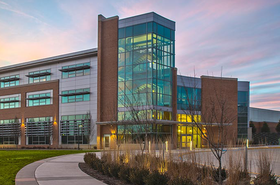There have been endless conversations about data center transformation in 2022, from expansion at the edge and cloud diversification to improved energy efficiency and boosted sustainability.
But one key element is often overlooked – the people.
While data centers are perceived as soulless, monolithic, tech-centric buildings, they would not function without the humans that maintain and operate them. What’s more, all of this forthcoming innovation would not be possible without the hands and minds of those that ideate and bring them to life.
According to IDC, the amount of data created, captured, copied and consumed worldwide will increase by more than 152 percent in the next two years. As the data center industry grows to keep up with the rapidly increasing demand for data, it must prioritize the operators and builders on the frontlines who make sure this data can be stored, processed and shared.
A face-off with physical risks
While the Covid-19 pandemic is no longer the imminent threat that it was even just a few months ago, it’s still here and isn’t going away anytime soon. As we slowly approach the endemic stage of this illness, facility managers need to continue to protect operators and maintain uptime by prioritizing disease control and disinfection throughout the facility and implementing contactless behaviors on-site.
Beyond the pandemic, construction workers, including those working on data center builds, have the highest risk of death, injuries and illness from heat exposure on the job. In fact, between 1992 and 2016, almost 300 construction workers died from heat-related causes, more than a third of all US occupational deaths from heat exposure. As we approach the warmer months, it’s important that builders are equipped with the knowledge necessary to prevent and respond to heat illness symptoms, from excessive sweating and dizziness to confusion and fainting.
Confronting mental health
One aspect of health and safety that is almost never discussed within the data center industry is the mental wellness of its workers.
Yes, we can absolutely make data centers smarter, build them faster and maintain them at a lower cost, but this transformation requires long physically and mentally exhausting hours of hard work. Data centers are also often understaffed, especially as managers continue to reduce the number of people on-site to avoid compromising the facility.
Between extended hours and a lack of staff, data center managers can show that they care for their employees by prioritizing their wellness over other demands of the job and further engaging with these individuals to better understand which safety and wellness initiatives are going well and what can be improved.
Innovation ignites the worker experience
Implementing innovative approaches to data center design will both push the boundaries of cutting-edge and prioritize the operator and builder experience.
Modular data center buildouts, which enable data centers to scale more efficiently and at a lower cost, are changing the approach to data center construction. Essentially, modular containers take the building blocks of a data center and reassemble them more efficiently. Since they are easy to build, maintain, transport and scale, builders no longer have to worry about injuries during construction and maintenance while ensuring the final product meets the client’s needs.
Liquid immersion cooling is another next-gen approach to innovating data centers while also enhancing the worker experience. Liquid-submerged servers have the ability to neutralize extreme facility temperatures while also eliminating the need for noisy fans, creating a quieter, more comfortable workplace.
Overall, there is no shortage of data center innovation that will enable the high tech applications and technologies of the future. The greatest innovations, however, will ensure that the human experience is prioritized above all else.





